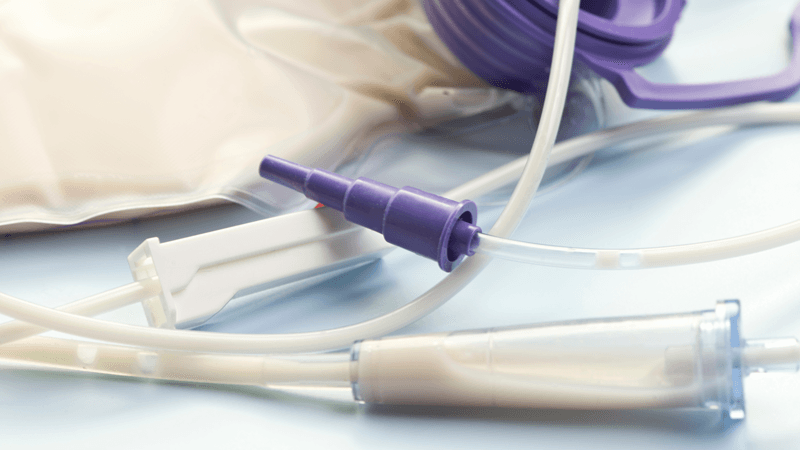Feeding tubes are medical devices made of plastic or silicone. They’re flexible and provide liquid nutrition to people who have difficulty chewing and swallowing or won't eat. Though they can often be beneficial, feeding tubes for those of advanced age may be risky.
If your loved one needs a feeding tube to manage a health problem or their doctor has prescribed liquid nutrition to help maintain their weight, it’s crucial to consider the pros and cons. In this article, we list feeding tube types, highlight their benefits, and discuss some potential risks.
When are feeding tubes for older adults necessary?
Feeding tubes for older adults are always doctor-prescribed. However, your loved one’s primary care physician might recommend a feeding tube if they have a nutritional deficiency or an underlying medical issue, like throat cancer, that makes swallowing difficult (or painful).
What are the types of feeding tubes?
There are several types of feeding tubes. Our Enteral Feeding Guide answers this question in greater detail, but here’s a quick breakdown:
Non-surgical feeding tubes
Some people only need a feeding tube for a few weeks or months. If that’s the case, your loved one might benefit from a non-surgical feeding tube. Examples of non-surgical feeding tubes include:
Surgically placed feeding tubes
If your loved one can’t eat or drink on their own, their doctor might prescribe a surgically placed feeding tube. These feeding tubes are inserted into an incision in the abdominal wall during an outpatient procedure. Examples of surgically placed feeding tubes include:
Jejunostomy (J tubes): J tubes bypass the stomach and connect to the small intestine. The placement of a J tube requires a brief surgical procedure.
Gastronomy (G tubes). A G tube is surgically inserted into the stomach. It can be removed anytime if your loved one regains the ability to eat and drink.
What are the benefits of feeding tubes for the elderly?
Feeding tubes for the elderly may offer various benefits, including:
Reduced risk of choking: Difficulties with chewing and swallowing can increase the risk of choking on food and drinks. Luckily, a feeding tube can significantly reduce that risk. When serving snacks and meals with a feeding tube, have your loved one sit upright. Then, make sure they stay that way for at least an hour after eating to help with digestion.
Reduced risk of pneumonia: Difficulty swallowing makes it easier for food and liquid to enter the airways. Inhaling food, drink, or saliva into the lungs increases the risk of pneumonia –– an infection with symptoms including a wet cough, fever, and chills.
Improved nutrition: Many seniors with difficulty chewing and swallowing don’t eat enough to get the necessary vitamins, minerals, and nutrients to thrive. Liquid meals contain calories, proteins, and carbohydrates, ensuring a healthy, balanced diet.
Easy snack and meal preparation and delivery: If your loved one finds it difficult to bite or chew, you might spend most meals hand-feeding them. While this is an easy way to reduce the risk of choking, it can be time-consuming. Liquid meals and snacks come pre-prepared. Simply open the seal and follow the directions on the box or pouch.
What are the risks associated with feeding tubes?
Feeding tubes make mealtimes more manageable, but they can also present risks, including:
Infection: Surgical feeding tubes leave an open wound, which increases the risk of infection. Always wash your hands with soap and warm water before touching the feeding tube. Clean the incision site daily and if your loved one develops signs of infection, like redness or swelling, contact their doctor immediately.
Gastrointestinal problems: Liquid meals take some getting used to. At first, your loved one may have gas, diarrhea, or constipation. To reduce the risk of these problems, always store enteral formula at the correct temperature and never add substances, like medications.
What if I have questions about feeding tubes?
If you have questions about feeding tubes, we encourage you to get in touch!
Our friendly Care Specialists speak English and Spanish and are familiar with all of the products we carry. After a brief survey and discussing your needs, they can make recommendations that align with your budget.
Ready to get started? Call (800) 696-CARE or email support@carewell.com today.



